Mounting and vibration measurement
The design details here not only look fascinating, they really are. That is, except for one “little thing” that makes the MagFlow 1225 PWM unable to play an equal game with the top 120mm fans, even though it seemingly has all the prerequisites to do so. But at least the Seasonic fan has the added value of a very convenient installation: magnet here, magnet there, no cables in sight.
Mounting and vibration measurement
Naturally, each tested fan must first be properly mounted. With all that we want to measure, and with the kind of precision that is required for relevant measurements, even the smallest details matter. The whole mounting system is quite complex and we are happy to have fine-tuned it to maximum satisfaction. Even if it meant hundreds of hours of tinkering. What’s so complicated about it? There’s more.
The fans are installed to the multi-purpose bracket. The substrate is a 2 mm thick metal plate to which the fan is attached, or the fan is attached together with an obstacle (e.g. a filter, hexagonal grille or liquid cooler radiator).
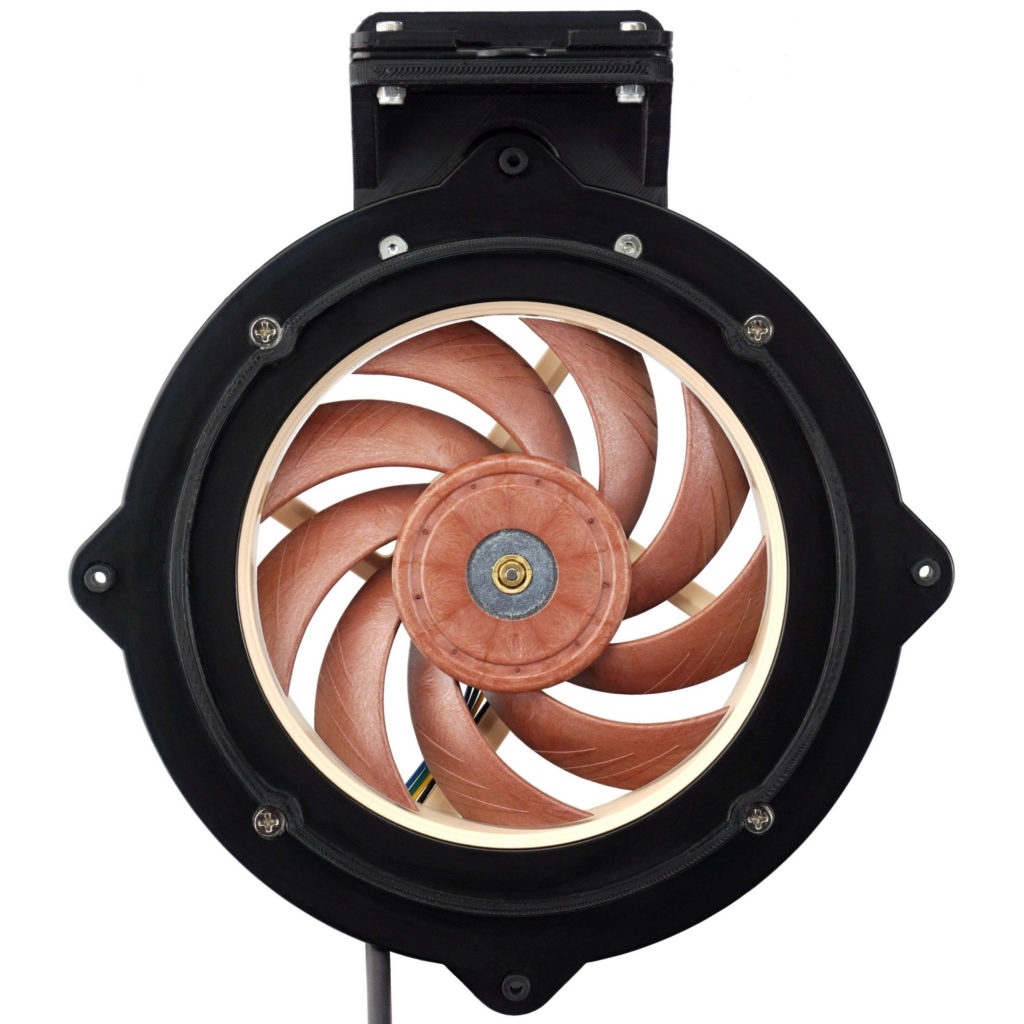
For correct and always equal pressure, the fans are always tightened with the same force with a torque screwdriver. If this were not the case, joints and clearances in the assembly could arise, in short, uneven conditions with undesirable distortion. For example, also for vibration measurement. On top of the fan mount there is also a bracket for the three-axis vibrometer sensor. The latter is magnetically attached via a steel insert, on which the sensor exerts a force of one kilogram and, thanks to the stop, is also always in the same place and in the same contact with the rest of the structure. These are the basics in terms of repeatability of measurements.
In order to capture the intensity at the highest possible resolution, the tray of the holder cannot be too heavy and at the same time it must be strong enough not to twist. This would again cause various distortions. Therefore, we used a hard (H19) aluminium (AL99.5) plate for the construction of the holder, whose weight is just enough so that free movement is not significantly restricted.
To achieve the finest possible resolution for vibration measurement, soft rubber inserts are provided in the mounting holes through which the bracket is installed to the tunnel. And just behind these inserts are silent blocks with a very low hardness of 30 Shore. These are also used so that the vibrations of the fans don’t spread to the tunnel skeleton. If this were to happen, then for fans with more intense vibrations, this secondary noise component, which is not related to the aerodynamic sound of the fan, would also be reflected in the noise measurement results.
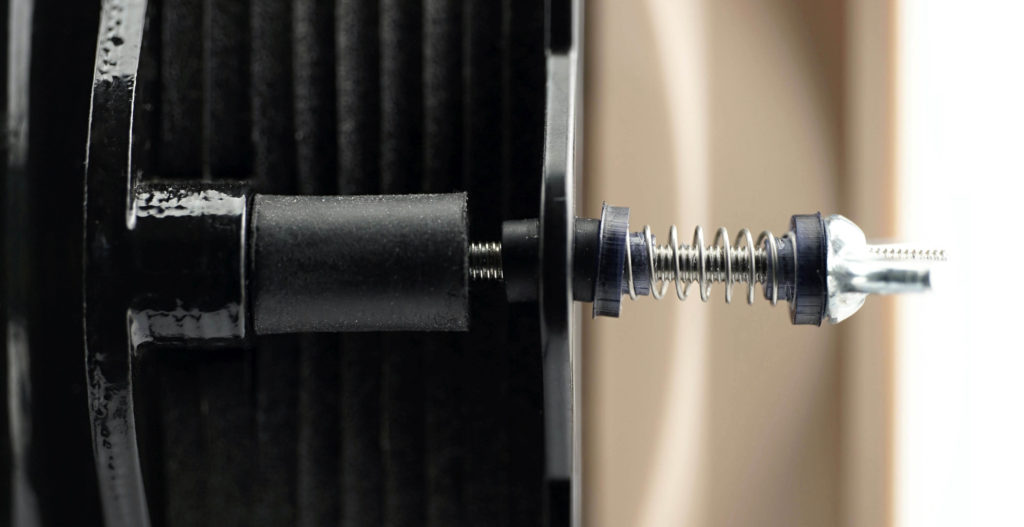
This is where it is good to have ideal conditions, even though they are unattainable in practice, because fan vibrations will always be transmitted to the case skeleton to some degree. But each cabinet will react differently to them, or rather the final noise level will depend on a number of factors, starting with the materials used. Therefore, it is a good idea to filter out this extra noise component in tests and in practice take into account the measured vibration intensities. The higher these vibrations are, the higher the noise addition has to be taken into account.
The silent blocks are naturally formatted to offset the bracket a bit from the rest of the tunnel, otherwise they wouldn’t make sense. This creates a gap that is sealed across the entire surface with a soft foam seal with closed cell structure (i.e., it’s airtight).
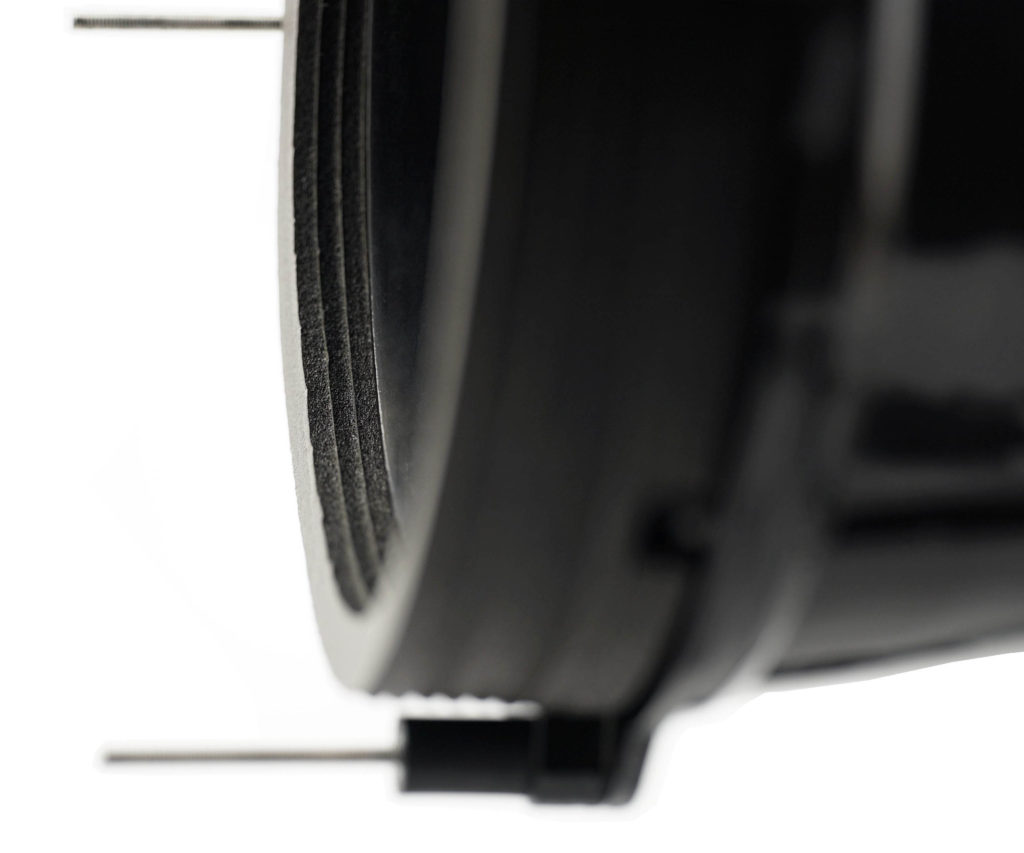
To properly center the fan rotor in relation to the other elements, the bracket includes a protruding frame that follows the inner contour of the seal. And to make matters even more complicated, the frame with the tested fan is pressed against this seal by a small force of compression springs, which in turn is set with the highest possible resolution for vibration measurement in mind and at the same time so that sufficient pressure is generated to maintain a flawless seal.
Vibration is measured with a Landtek VM-6380 vibration meter. It records the vibration speed (in mm) per second in all axes (X, Y, Z). For quick orientation, we calculate a 3D vector from the measured values and graph the “total” vibration intensity. But you can also find your results if you are only interested in a specific axis.
The most complicated part of the tunnel is behind us, and we’ll move on in the next chapter. But we will still stay at the beginning of the tunnel, we will just turn to the peripheries on the sides.
- Contents
- Seasonic MagFlow 1225 PWM in detail
- Overview of manufacturer specifications
- Basis of the methodology, the wind tunnel
- Mounting and vibration measurement
- Initial warm-up and speed recording
- Base 6 equal noise levels…
- ... and sound color (frequency characteristic)
- Static pressure measurement…
- … and airflow
- Everything changes with obstacles
- How we measure power draw and motor power
- Measuring the intensity (and power draw) of lighting
- Results: Speed
- Results: Airlow w/o obstacles
- Results: Airflow through a nylon filter
- Results: Airflow through a plastic filter
- Results: Airflow through a hexagonal grille
- Results: Airflow through a thinner radiator
- Results: Airflow through a thicker radiator
- Results: Static pressure w/o obstacles
- Results: Static pressure through a nylon filter
- Results: Static pressure through a plastic filter
- Results: Static pressure through a hexagonal grille
- Results: Static pressure through a thinner radiator
- Results: Static pressure through a thicker radiator
- Results: Static pressure, efficiency by orientation
- Reality vs. specifications
- Results: Frequency response of sound w/o obstacles
- Results: Frequency response of sound with a dust filter
- Results: Frequency response of sound with a hexagonal grill
- Results: Frequency response of sound with a radiator
- Results: Vibration, in total (3D vector length)
- Results: Vibration, X-axis
- Results: Vibration, Y-axis
- Results: Vibration, Z-axis
- Results: Power draw (and motor power)
- Results: Cooling performance per watt, airflow
- Results: Cooling performance per watt, static pressure
- Airflow per euro
- Static pressure per euro
- Results: Lighting – LED luminance and power draw
- Results: LED to motor power draw ratio
- Evaluation





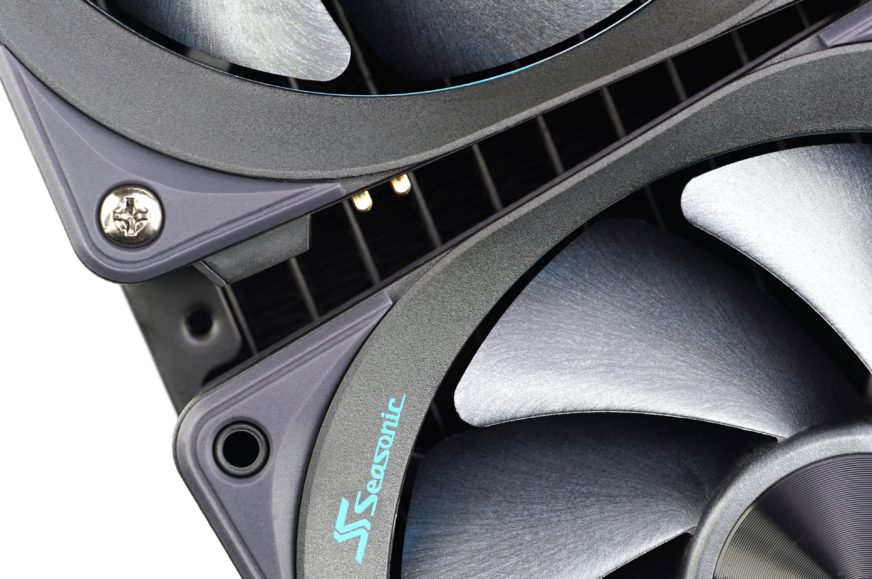
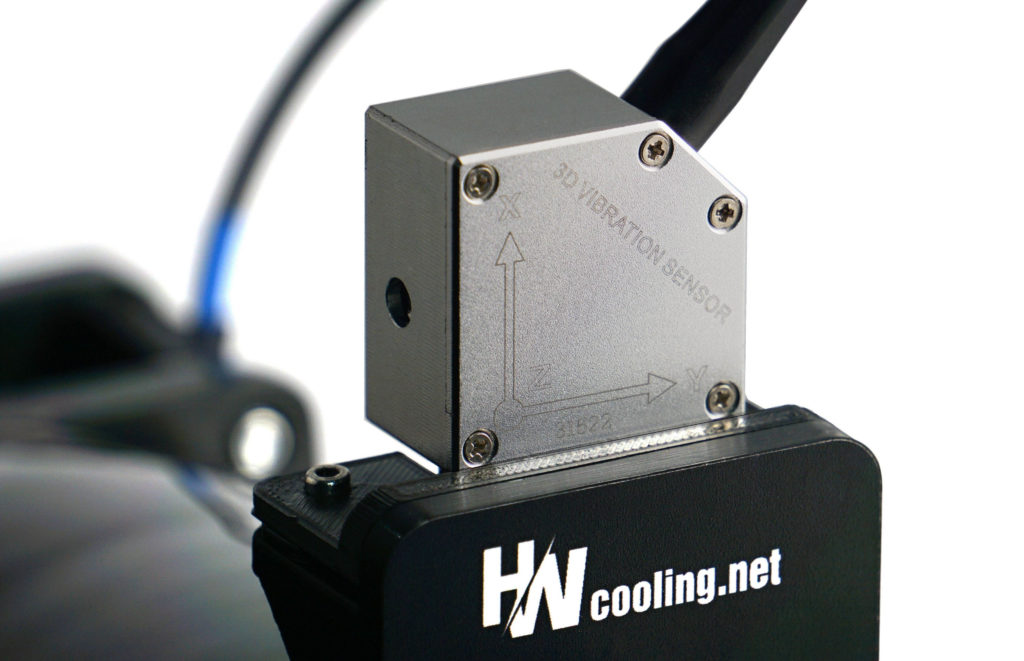


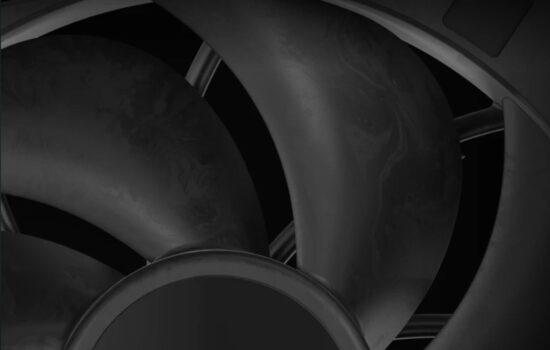



It’s surprising to me that, despite having a small impeller and relatively large gaps between the blades and the frame, the fan doesn’t perform too badly. The large blade surface area likely helped. The performance relative to the price is really bad though…
The price is likely high due to both the LCP blades and fancy magnetic connections. The later of which seemed executed well, but the former is “wasted” due to Seasonic not using this advantage to make the gaps smaller. With the current impeller design, they might have been able to use reinforced PBT with little penalty while significantly lower the cost. Really puzzling why they go LCP without fully taking advantage of it.
I also wonder if the magnets are what leading to the frames being so thick. The diameter of the impeller is noticeably smaller than many other 120 mm fans, which is something commonly seen in other fans with similar magnetic connections. It is in my opinion a bad tradeoff.
Despite all its flaws, it’s a decent first fan from Seasonic. Hope they can fix the motor issue and improve the fan in other ways in their next iteration.
Very good point, about the smaller rotor of the MagFlow fan. But it is still significantly larger than on the Arctic BioniX P120 A-RGB. There is some compensation in the smaller area of the hub, but it is true that the efficiency is much lower in these places than at the other end of the blades.
It is also true that smaller gaps between the blades may not be such an advantage compared to traditional 7-blade fans, when you take into account that with a larger number of blades there are also larger gaps and the total area is decisive. Although it always depends on the geometry and inclination of the blades themselves. The number and length of the leading edges also play a role in the overall efficiency or airflow/noise ratio, so more blades may not always be a plus. Arctic probably knew very well that with fewer and larger blades, a lower noise level could be achieved at the same airflow. I mean, under certain circumstances, theoretically, when the noise level is not increased by the tonal peaks from vibration, that is… they figured that out later.
With a quieter motor, the MagFlow fan would show up in a completely different light, although it would probably not reach the peak at any of the noise levels. But we know that this geometry makes sense. Although less so in the high-end than in the low-end. It wasn’t that long ago that we were dealing with Genesis Oxal fans, whose basic outlines are similar to those of the MagFlow fan. Unfortunately, we don’t have its results publicly (it was an internal prototype test), but when Oxal fans come out (for now they can be bought only as part of cases) and we add them to the tests, you will see how they shuffle with the class of the cheapest fans. There the price/performance ratio will be a bit different… 🙂
MagFlow 1225 has very well-made appearance and decent ~ middle efficiency for some obstacles but.. the problem is that the price is as expensive as other high-end fans. I also found the same cons of MagFlow as your test.
In my test, Magflow shows especially worse result in radiator-pull test.
Some PSU manufacturers started to make their own PC cooling solution recently. And Seasonic’s product, which was the first runner among them, seems to fail in the competition. I would like to see if Super Flower’s Megacool can show good result. Challenges of various companies for PC cooling solutions makes the topic about it more interesting, isn’t it?
Thanks for the heads up about the Super Flower Megacool. I didn’t know about this fan and yet it looks like a capable challenger to the T30. Although personally I think one of the benefits of Phanteks is the smaller number of blades, which under certain circumstances (when there are no tonal peaks due to excessive vibration) can achieve higher airflow and static pressure at lower noise levels… by having fewer edges cutting the air. Arctic also seems to have worked with this thesis already with 5-blade designs. Though initially they underestimated the choice of material, or the need to reinforce the blades with a rotor frame, which was added later.
Heavily curved 9 blades, LCP impeller, 30T thickness. But not only that, Megacool has quite interesting feature.
https://img2.quasarzone.com/editor/2023/07/12/deac9fde48ba4aceebed595f2d8a9281.jpg
It has 12 pole motor! I never have seen this before in PC fans.
But one concern is that it uses 2 ball bearing. Megacool can have irritating noises. I can’t predict whether or not Megacool have tonal peaks due to aerodynamic interaction, but the bearing driving noise will seem clear to hear..
So even assuming there is no tonal peaks from Megacool, the lower normalized noise level of each fans, I think PH-F120T30 will make the better airflow/static pressure.
The Megacool also kinda sucks for its price,
Bearing noise isn’t even its problem, its the poor dynamic balance and motor noise. It especially makes funny motor whines when stopping at low speed or when it starts spinning. But it also makes weird noises when accelerating
But however, what is actually interesting is they for whatever reason, included a remote control to control fan speed profile